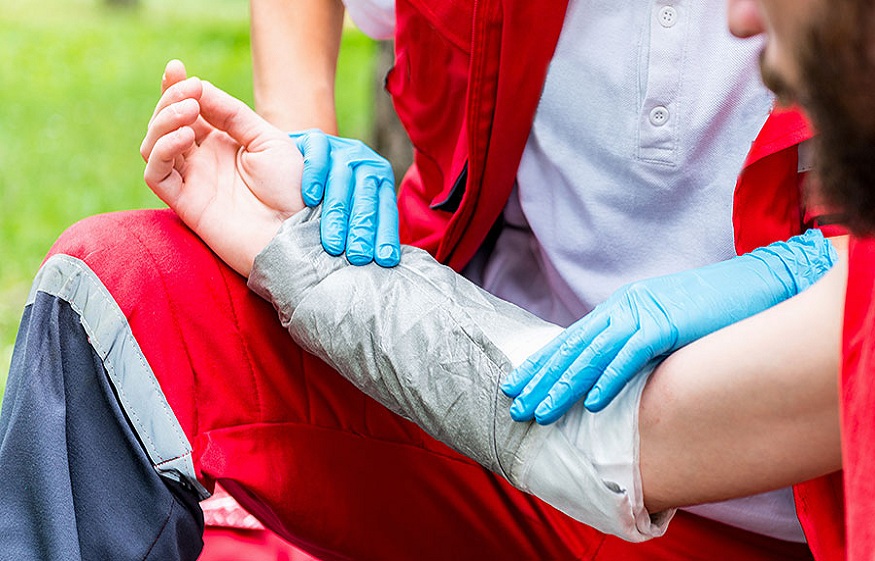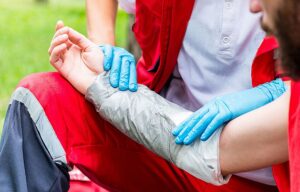How to treat an injury
GO TO A PHYSIOTHERAPIST
Because, if Auntie is very nice, consulting a health professional remains the best option. Of course, all the episodes of Once Upon a Life have allowed you to understand that the body is a marvelous machine, with lots of cute little vessels and globules,… In short, while you wait to finish your strawberry BN, here is a revelation: your body is great, but sometimes it needs help. So, if it has the capacity to heal, giving time to time is not enough for a complete recovery or to avoid a risk of relapse. Going to a physiotherapist means optimizing your recovery and, as a bonus, getting the advice of a pro to quickly become independent and an actor in your rehabilitation until you return to your playing field.
HEAL YOUR INJURY BY BOOSTING YOUR HEALING
Another piece of good news: healing can be optimized. How? By giving the body everything it needs. No, chestnut cream doesn’t count.
In this case, the Holy Trinity remains food, sleep and activity. You do good to your little body and in return, it offers a rave party to all the small cells that have not yet switched to the large-scale drug trafficking set up by Maestro. Yes, he hid his game well.
Of course, you shouldn’t expect a miracle: it’s about putting your body in good conditions so that it is at its maximum capacity to heal. So, some soup and off to bed!
And when everything is better, there is no question of playing Jackass . You have to understand why you got injured to avoid a recurrence. Then, learning exercises at the end of rehabilitation allows you to be independent in strengthening or improving the mobility of a key area in the case of injury.
THE RECOVERY
Because when it’s time to get back to work, the real thing, the time to sniff chalk and eat little pieces of straw because of the rope climbs, it’s a delicate step. There’s no question of going back to work as if nothing had happened. The secret? You have to be able to balance the effort and the workload to put in the maximum stress without recreating trauma . That’s the theory. In practice, here’s how to do it:
If you don’t have pain on these 2 criteria, you can do more. The goal is to gradually increase by challenging the body 6 days a week. If after a workout, you feel pain 30 minutes after the effort or the next morning, it’s because it was too much.
In this case, we do not stop but we just return to the previous step to validate it again.
This method, ECE “External Constraints Evaluation” , may seem as long and boring as a Finnish art house film in the original version, but it is the ideal way to avoid a relapse when you start again.
To learn more about this, read our two articles:
How to get back into sport without getting injured.
What exactly is mechanical stress quantification?
Man using K-tape on his knee
HOW TO AVOID INJURIES?
So, you can possibly apply to the program to become Robocop. If you don’t particularly want to spend the rest of your life with the voice of an old saucepan and the wardrobe of a junkyard, there is only one solution: listen to your body! Because yes, your body speaks to you! Technically, it doesn’t really count if you think your body is crying out for a second salted caramel pancake. But for the rest, go for it.
Pain is still a warning signal, but not a signal to stop! Total rest is not always the best option, on the contrary. Doing nothing for two weeks and then starting again as if nothing had happened, with the same intensity, is heading straight for a wall. “This does nothing to help healing and during the 15 days of rest, you lose your physical condition and an unsuitable return to work will only aggravate the injury or increase the risk of relapse. Varying activities can also be a way of training your body to different types of effort and making it more able to adapt and therefore be less fragile,” explains Thibault from KOSS Paris.











Post Comment
You must be logged in to post a comment.